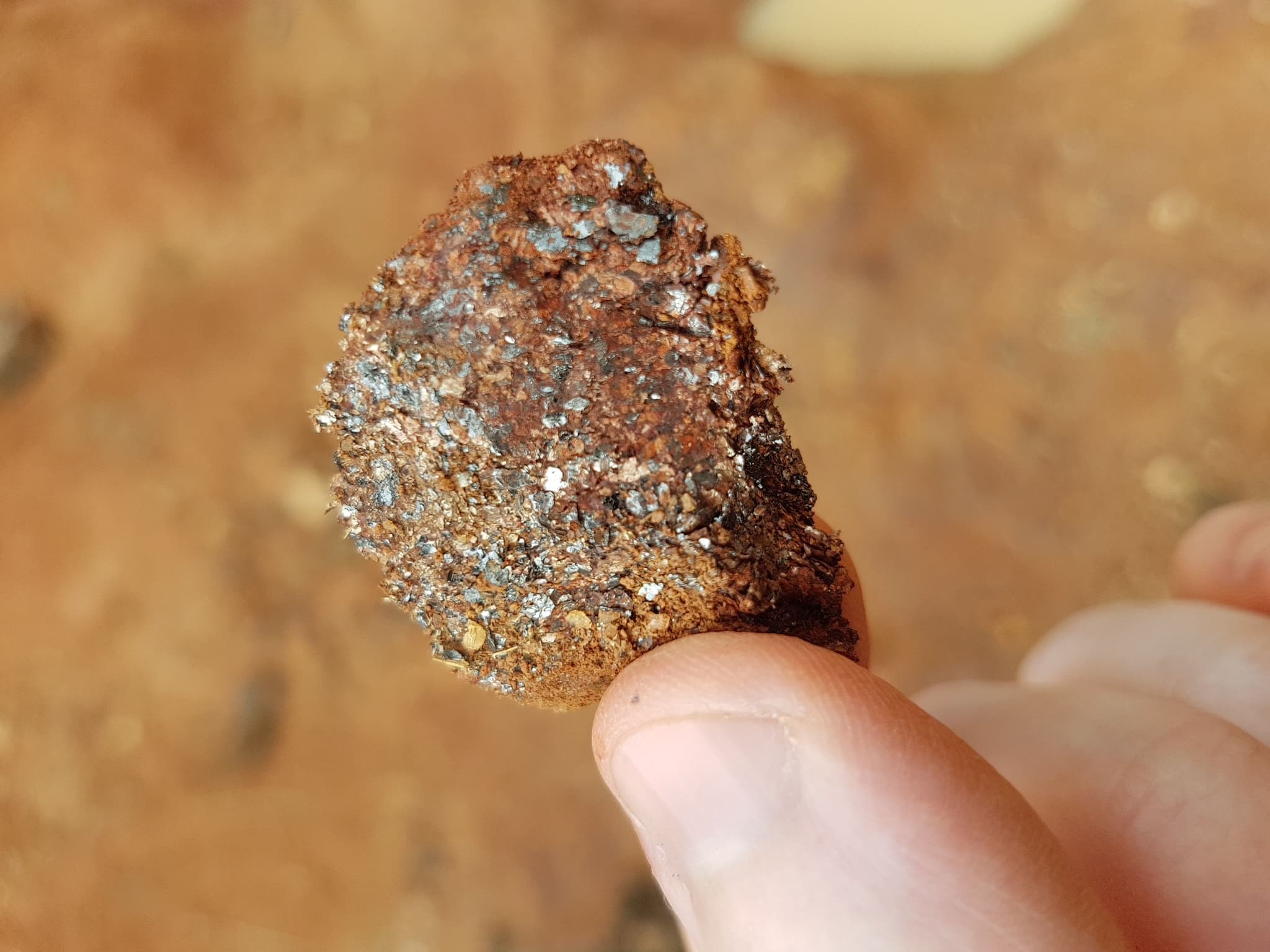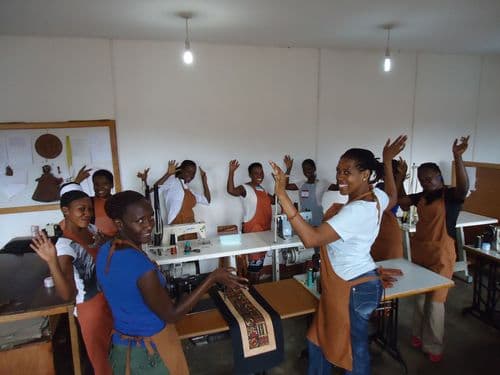1. Your research focuses on the purification and preparation of graphene-like nanoplates from natural graphite found in Canindé, CE, Northeast-Brazil. Can you explain how this particular natural graphite differs from other sources of graphite, and why you chose it as your focus?
As in many parts of the world, Brazilian mineral authorities, led by the Geological Survey of Brazil, have declared graphite a strategic mineral resource, given its crucial role in the production of lithium-ion battery anodes. These are essential to the global energy transition toward cleaner, lower-carbon technologies. This designation, combined with graphite’s well-established uses in metallurgy, has led to political and economic incentives for the discovery of new deposits across Brazil — a country with a long-standing tradition in commodity production. Several regions are particularly favorable for flake graphite exploration, including the states of Bahia, Tocantins, and Ceará, as well as the border area between Piauí and Maranhão. These areas have been referred to as the “New Brazilian Graphite Provinces” and have drawn increasing interest from investors. A significant part of our work involves supporting the development and strengthening of this emerging industry, including through scientific efforts to demonstrate the potential of Brazilian graphite for advanced applications such as graphene production and its derivatives. This also helps add value to mineral resources in historically underserved regions like the Brazilian Northeast.
2. What were some of the major challenges you faced while working on the purification process, and how did you overcome them?
It is important to highlight the pioneering work carried out in Brazil by the Federal University of Ceará, which established an experimental pilot plant for graphite ore processing within its facilities—bringing academia closer to industry. The project led to the first successful tests of the plant's operation, using graphite sourced from the Canindé region in the state of Ceará. A key aspect of the initiative was its interdisciplinary nature, involving geologists, physicists, chemists, and engineers, with technical collaboration from the University of Brasilia, where I am currently based. The initial challenge was to get the pilot plant up and running. From there, the focus shifted to simultaneously concentrating the graphite ore while testing the feasibility of producing graphene-like materials directly from the raw ore. A series of tests were led by Professor Lucilene Santos, who systematically varied flotation parameters, alkaline chemical purification conditions, and acid leaching variables, eventually identifying the optimal operating conditions described in the published scientific article. It is important to note that each ore body has its own geological controls and mineralogical composition, which means the concentration and purification processes must be tailored to each specific deposit—posing an additional challenge beyond the standard mineral processing workflow.

3. Graphene has wide-ranging applications. Can you share some of the potential real-world uses of the graphene-like nanoplates you've developed, particularly in industries that could benefit from natural sources of graphite?
Our work is aimed at developing higher value-added applications for graphite ore, with a particular focus on the abundant supply of graphene-derived nanomaterials. The goal is to support the provision of high-quality raw materials for the nanotechnology industry, contributing to the reduction of production costs for nanostructured devices and promoting the broader adoption of nanotechnology. From a nanoplatelet concentrate, such as the one obtained in this study, it is essential to carry out technological characterization to tailor the material to specific applications, such as the spheroidized form for batteries, the expanded form for flame retardants, or even other uses not yet considered.
4. In the context of your work, how does the preparation of nanoplates influence their properties, and what characteristics make your approach unique compared to other methods of preparation?
A key feature of this nanoplatelet preparation method is that it is carried out alongside the beneficiation of graphite ore. Traditionally, mining operations focus on the efficient extraction and concentration of ore, with limited interaction with the materials transformation industry. What sets this method apart, compared to conventional practices in both industry and academic research, is its integration of two stages within a single experimental plant: the concentration of graphite ore from raw rock and the sequential transformation of the resulting concentrate into nanoplatelets. This serialized approach results in a higher value-added final product, ready for commercialization.
5. Can you tell us more about the environmental implications of using locally sourced graphite in your research, especially in comparison to other methods that rely on synthetic materials?
This perspective is a key source of inspiration for our work. We fully acknowledge the importance of synthetic materials, particularly due to their nearly ideal purity and crystallinity. However, I see this reliance as a limiting factor for the widespread adoption of high-tech devices, as synthetic materials almost invariably entail higher production costs compared to processed natural materials. After all, even synthetic materials ultimately originate from natural resources. Although natural materials may never reach the theoretical properties observed in synthetics, their performance often exceeds that of conventional materials and is sufficient to improve existing devices. In this sense, the commodity production chain is strengthened by initiating material transformation closer to the mineral source. From an environmental standpoint, this approach reduces the energy required for processing, minimizes the need to transport raw or semi-processed material over long distances, and allows for more efficient logistics. For robust materials such as graphite, these factors must be carefully considered in cost projections and in calculating the project's break-even point.
6. What are some of the future directions you envision for your research in material science, particularly in the development of graphene and other 2D materials?
We explore multiple perspectives, all grounded in the premise of providing high-quality and abundant raw materials for high-tech industries, sourced from mineral and, therefore, natural resources that are strategically processed to meet market demands, such as those of the nanotechnology sector. It is important to emphasize that graphite and its graphene-derived products are not the only mineral-based opportunities for producing two-dimensional (2D) materials. There is significant potential in minerals such as talc, clay minerals, and other phyllosilicates, as well as molybdenite and other bulk-type mineral substances that can be readily converted into 2D materials.
7. How do you see the role of academic collaboration in advancing research like yours, and are there any partnerships or networks that have been especially helpful in the development of your work?
Academic scientific research plays a critical role in technological development, as it is within this context that it becomes feasible to take on the "risks" of time, resources, and team mobilization: risks that are often not justifiable for most industrial players. In academia, a consciously conducted unsuccessful experiment is viewed as an investment: even if the outcome is not favorable, it provides valuable insight into why a particular process failed and helps identify what to avoid or explore in future attempts. In the industrial setting, however, such outcomes are more likely to be seen as financial losses, especially if the expected return does not materialize in the short or medium term. For this reason, many companies choose not to invest directly in fundamental research, even when it is oriented toward solving applied problems. In such cases, partnerships with research institutions, such as universities, become a strategic alternative. These collaborations involve experts who can dedicate part of their time to addressing specific technological challenges. Our own project is a clear example: it brings together specialists from the Federal University of Ceará and the University of Brasília, in collaboration with graphite mining companies interested in developing innovative processes to integrate into their production chains.
8. Given the increasing interest in nanomaterials, what do you think are the most exciting breakthroughs or advancements on the horizon in the field of material science?
One of the most fascinating aspects of materials science is the virtually limitless range of possibilities: there is always room to discover a new polymorph, develop a novel material, improve an existing manufacturing process, create new additives, design advanced composites, or test alternative surface treatments. This was already true for bulk materials, but with nanomaterials, the combinatorial landscape of possibilities has expanded dramatically. Nanomaterials exhibit effects and properties that are not yet fully understood and are far more sensitive to small variations than conventional materials. The size, shape, and morphology of a nanoparticle can significantly alter the properties of the final material. We are immersed in a vast universe of opportunities yet to be explored. Today, even relatively simple experiments have the potential to yield meaningful innovation.

9. Can you share any advice for young researchers or students looking to enter the field of material science, especially those interested in nanotechnology or materials innovation?
The possibilities are vast. Because materials science is inherently interdisciplinary, professionals from various backgrounds can shift their focus and apply a materials-based perspective to problems in their original fields. That’s essentially what happened in my own case: I’m a geologist by training, but I pursued a master’s and PhD in materials science. As a result, my work is always oriented toward natural substances, such as minerals and rocks, and exploring their underutilized technological potential. Another motivating aspect is the wide range of career paths within the field. There are opportunities in computational simulation, laboratory research, fieldwork, office-based analysis, and hybrid approaches that combine these elements. This makes materials science a field that can accommodate almost every type of student or early-career researcher. One point I always emphasize to students is that there’s nothing wrong with an academic project not yielding exactly the expected result. That’s part of the scientific process. What matters is the ability to recognize why something didn’t work, to identify the underlying phenomenon, and to analyze it critically. Science is built through small, incremental contributions, both from what works and from what doesn’t, and it is through this steady accumulation that major breakthroughs become possible.
10. Finally, what is the most surprising or unexpected discovery you’ve made throughout your research, and how did it shape your approach to material science?
Currently, I dedicate part of my career to investigating the geological contexts that allow for the natural formation and stabilization of certain minerals at the nanometric scale, occurring in relatively high concentrations within rocks. These minerals, known as nanoliths, exhibit physical and chemical properties that differ significantly from their macroscopic counterparts, making them particularly interesting for technological applications. It remains a relatively unexplored field, with strong potential for scientific advancement and the development of novel applications.








